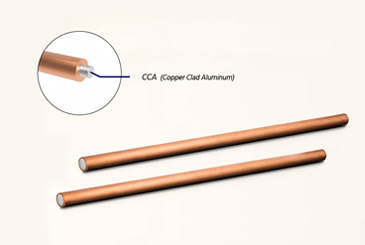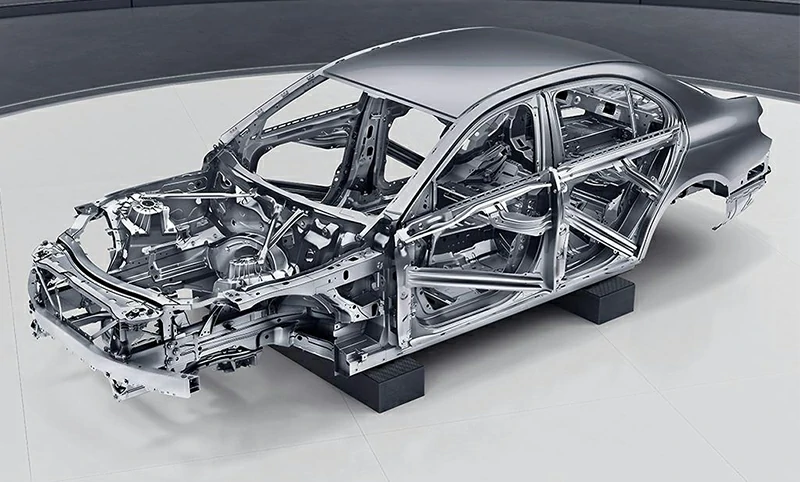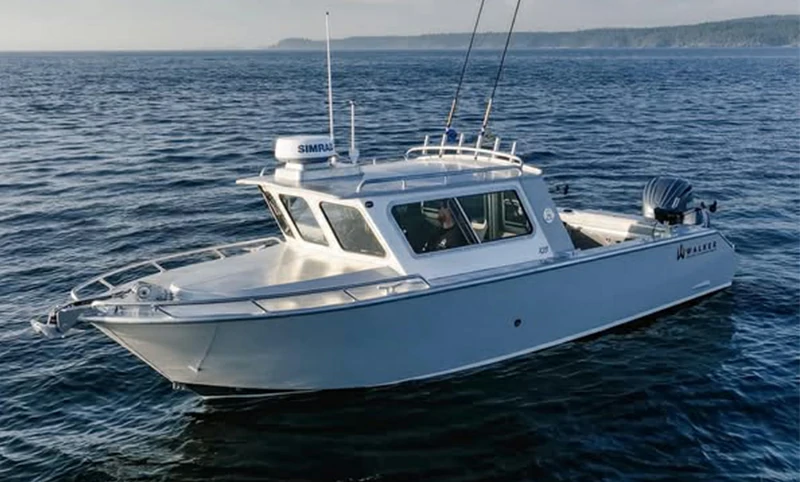Welding is one of the most crucial processes in modern manufacturing. As the core material in the welding process, welding wire directly affects welding quality and efficiency.
4943 Welding Wire is an aluminum/silicon filler metal designed for high-strength welding applications, offering significant strength advantages and excellent welding performance. Its ultimate tensile strength and yield strength after welding are 25% and 50% higher than traditional ER4043 welding wire, and it has low melting temperature and good fluidity, making it suitable for a wide range of industrial applications.
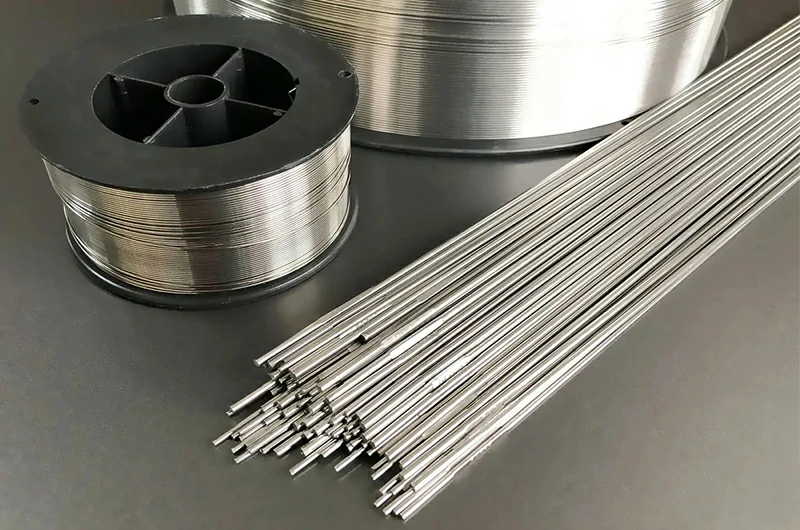
Specification of Chalco R4943/ER4943 welding wire
- AWS A5.10, ER4943, R4943
- ASME SFA 5.10, ER4943, R4943
- SFA 5.10
- CWB, ER4943 (0.9 mm - 1.6 mm)
- ABS, ER4943, 100% Ar or Ar /He Mix (0.035 ” - 0.062 ”)
- ABS, R4943, 100% Ar (0.062 ” - 0.156 ”)
- vd TUV 1153
Chalco R4943/ER4943 welding wire chemical composition
| Chemical composition table | |
| Silicon (Si) | 5.0-6.0 |
| Iron (Fe) | 0.40 |
| Copper (Cu) | 0.10 |
| Manganese (Mn) | 0.05 |
| Magnesium (Mg) | 0.30-0.50 |
| Zinc (Zn) | 0.10 |
| Titanium (Ti) | 0.15 |
| Beryllium (Be) | <0.0003 |
| Others Each | 0.05 |
| Others Total | 0.15 |
| Aluminum (Al) | Remainder |
Chalco R4943/ER4943 welding wire performance parameter table
| Physical and mechanical properties | |
| Solidus | 1065°F |
| Liquidus | 1170°F |
| Density | 0.097 lbs/in3 |
| Electrical/Thermal conductivity | 41% IACS/1040 EU |
| As Welded UTS Typical | 35 ksi |
| Typical GMAW welding procedures; DCEP | ||||
| Wire Diameter | Amps | Volts | Travel speed (ipm) | Argon (cfh) |
| 0.035 | 275-570 | 70-185 | 15-27 | 25-40 |
| 3/64 | 175-480 | 125-260 | 20-29 | 24-35 |
| 1/16 | 175-350 | 170-300 | 24-30 | 28-38 |
| Typical GTAW welding procedures; ACHF with pure or ziconiated hemisphere shape tungsten tip | ||||||
| Filler Wire Size | Tungsten | Amps | Volts | Gas Cup Size | Argon (cfh) | Base thickness |
| 1/16” | 1/16” | 60-80 | 15 | 3/8” | 20 | 1/16” |
| 3/32” | 3/32” | 125-160 | 15 | 3/8” | 20 | 1/8” |
| 1/8” | 1/8” | 190-220 | 15 | 7/16” | 20 | 3/16” |
| 5/32” | 5/32” | 200-300 | 15 | 1/2” | 25 | 1/4" |
| 3/16” | 3/16” | 330-380 | 15-20 | 5/8” | 25 | 3/8 ” |
Chalco R4943/ER4943 welding wire standard wire diameter
| Diameter | .030; .035; 3/64; 1/16; 3/32; 1/8; 1/16; 3/32; 1/8; 5/32; 3/16; 1/4 |
| Package form reference | 4 &12 in. Spools Straight lengths |
Chalco R4943/ER4943 welding wire performance advantages
- Significant strength advantages: The ultimate tensile strength is 25% higher than ER4043, and the yield strength is 50% higher. The typical tensile strength can reach 35 ksi. This makes it stronger after welding and able to withstand greater loads.
- Excellent welding performance: 4943 welding wire has low melting temperature and excellent fluidity, smooth weld surface, reduced welding stains and discoloration. Stable arc, smooth operation, improved welding quality. Low shrinkage helps reduce welding deformation, low thermal crack sensitivity, effectively avoid thermal cracking, and ensure stable welding quality.
- Greater compatibility: 4943 welding wire is suitable for 1XXX, 3XXX, 4XXX, 5XXX (Mg content less than 2.5%), 6XXX series base metals, and can weld cast alloys such as 443, 355, 356 and 214. In addition, it is also suitable for applications that require heat treatment and aging.
- All-position welding: 4943 welding wire complies with AWS A5.10 ER4943 standard and supports all-position welding operations, ensuring stable welding results in various welding environments.
- Excellent corrosion resistance: 4943 welding wire has excellent corrosion resistance and is particularly suitable for applications that require corrosion resistance, such as marine environments and chemical industries.
- Moderate electrical and thermal conductivity: With moderate electrical and thermal conductivity, it helps to effectively control the heat input during welding and reduce thermal cracking and deformation.
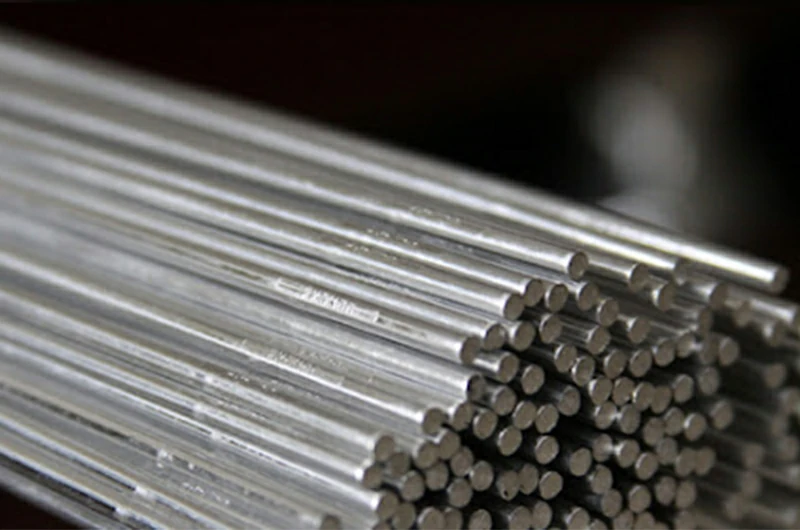
Performance comparison between 4943 welding wire and traditional welding wire: Advantages analysis
| Performance characteristics | 4943 welding wire | ER4043 welding wire | ER5356 welding wire |
| Ultimate tensile strength | Increase by 25% | 28 ksi | 40 ksi |
| Yield Strength | Increase by 50% | 19 ksi | 35 ksi |
| Welding performance | Good fluidity, low melting point | Higher melting temperature, poor fluidity | Good fluidity, high melting point |
| Hot crack sensitivity | Lower | Higher | Lower |
| Shrinkage | Low, reduce deformation | Higher, prone to deformation | Low, reduce deformation |
| Corrosion resistance | Excellent | generally | good |
| Applicable base material | Applicable to various aluminum alloy series | Mainly applicable to 4XXX, 5XXX series | Applicable to 5XXX series |
| Applicable industries | Automobile, aerospace, marine engineering, etc. | General Industrial Applications | Aerospace, marine engineering, etc. |
Chalco R4943/ER4943 welding wire application technical guide
To ensure the best performance of 4943 welding wire during welding, the following are some usage recommendations covering shielding gas, flow rate range, welding procedures, storage and maintenance. These recommendations can help improve welding quality and extend the service life of the welding wire.
- Shielding gas: 100% argon or argon/helium mixed gas is recommended. Argon provides a stable arc and protection. Argon/helium mixed gas is suitable for thicker aluminum materials.
- Flow rate range: The gas flow rate should be maintained at 35-50 cfh (14-24 l/min). A flow rate that is too low may cause oxidation, while a flow rate that is too high may affect welding stability.
- Welding Procedure: Adjust welding parameters based on aluminum type and thickness. Thicker materials require higher current and voltage while ensuring proper preheat and interpass temperatures.
- Storage and Maintenance: Welding wire should be stored in a dry, clean environment, away from moisture and contamination. It is recommended to use a heavy steel wire basket to protect the welding wire to ensure that its quality is not affected.
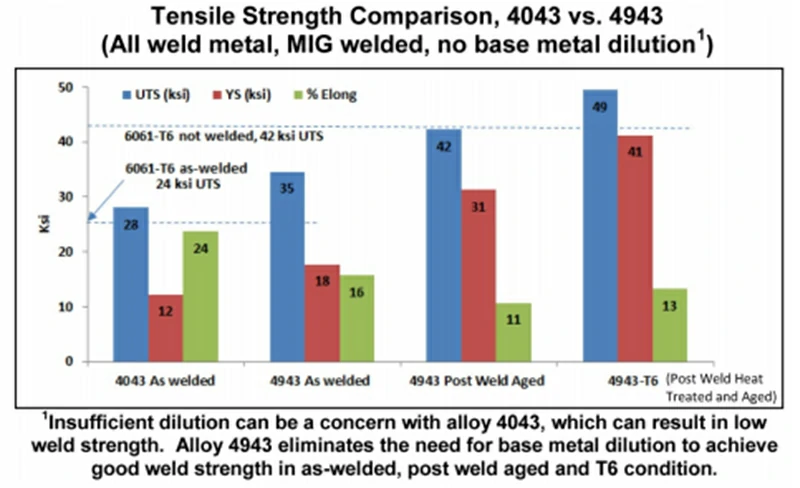
Chalco welding wire application cooperation areas
Chalco welding wire is widely used in many industries, meeting the high requirements of welding quality and welding effect in different industries. Our welding wire performs well in the following fields:
- Automobiles and motorcycles: high-strength structural components such as frames and wheels.
- Aerospace: Hardware and structural welding.
- Shipbuilding and marine engineering: ship decks and frames.
- Sporting goods: scooters, bicycles, etc.
- Casting alloy welding: welding of 356 alloy castings.
- Other areas: ladders, furniture, general repairs and maintenance.


Chalco welding wire product buying guide
1. Selection of welding wire type
According to different welding processes, aluminum alloy welding wire can be divided into the following types:
- Solid welding wire: commonly used in gas shielded metal arc welding (GMAW) process, suitable for welding most aluminum alloys.
- Flux-cored wire: Contains flux inside, suitable for self-shielded metal arc welding (FCAW), and can complete welding without external gas protection.
- TIG welding wire: used for tungsten inert gas welding (TIG), suitable for high-precision welding, especially for thin aluminum alloy materials.

2. Guide to alloy and welding material selection
The selection of aluminum alloy welding wire should match the alloy composition of the base material to ensure the strength and stability of the welded joint. Common aluminum alloy welding wires include:
- 4043 welding wire: suitable for aluminum-silicon alloys, commonly used for welding aluminum and aluminum alloys, has good crack resistance, and is commonly used in the automotive, aviation and other industries.
- 5356 welding wire: suitable for aluminum-magnesium alloys, with high strength and corrosion resistance, suitable for marine, chemical and other environments.
- 5183 welding wire: suitable for aluminum-magnesium alloys, especially suitable for high-strength welding, widely used in aviation, shipbuilding and other fields.
- 4047 welding wire: suitable for aluminum-silicon alloy, has good fluidity, and is suitable for thick plate welding of aluminum alloy.
Selecting the right welding wire alloy composition can ensure the quality of the weld and the performance of the joint.
3. Wire diameter
The diameter of the welding wire affects the heat input, welding speed and filler volume of the weld during welding. Common welding wire diameter options include:
- Fine welding wire (0.6mm - 1.2mm): suitable for welding thin aluminum alloy materials, providing finer welding control.
- Medium diameter welding wire (1.2mm - 2.4mm): suitable for welding aluminum alloys of general thickness, providing better welding performance.
- Thick welding wire (2.4mm and above): Suitable for thicker aluminum alloy materials, providing higher welding speed and greater welding strength.
Select the appropriate wire diameter according to the thickness of the aluminum alloy and welding requirements.
4. Welding performance requirements
The welding performance of aluminum alloy welding wire directly affects the welding quality. Common performance requirements include:
- Crack resistance: Aluminum alloys are prone to cracks when welded. Choosing welding wire with good crack resistance (such as 4043, 4643, etc.) can avoid this problem.
- Corrosion resistance: For marine, chemical and other environments, choosing welding wire with excellent corrosion resistance (such as 5356, 5183, etc.) can ensure the long-term stability of the welded joint.
- Fluidity: Some welding wires, such as 4047, have good fluidity and are suitable for welding thick aluminum alloy materials, which can ensure a smooth welding process.
Select appropriate welding wire properties according to specific welding environment and requirements.
5. Welding process matching
Different aluminum alloy welding wires are suitable for different welding processes. Common welding processes include:
- Gas metal arc welding (GMAW/MIG): Suitable for welding most aluminum alloys, usually using solid wire or flux-cored wire.
- Tungsten inert gas welding (TIG): Suitable for high-precision welding, TIG welding wire is commonly used.
- Submerged Arc Welding (SAW): Suitable for welding thick plates, usually using flux-cored wire.
When selecting welding wire, it is necessary to consider the requirements of the welding process to ensure the stability of the welding process and the quality of the joint.
6. Packaging and storage
Aluminum alloy welding wires are packaged in a variety of ways, and the appropriate packaging method is usually selected based on product specifications, usage, and transportation requirements. Common packaging forms include:
- Coiled welding wire: This packaging form is usually used for larger specifications of welding wire, which is convenient for long-term storage and large-scale use. Coiled welding wire is suitable for automatic welding equipment and can provide continuous welding operations.
- Small package welding wire: welding wire for smaller specifications or specific purposes, usually each package contains a certain length of welding wire, suitable for manual welding or small-scale operations. Small package welding wire is also suitable for trial welding and sample testing.
- Coiled welding wire: Commonly used in automated welding equipment, it can provide stable wire feeding performance. Coiled welding wire is easy to change quickly and operate efficiently, and is usually used in large-scale welding production.
- Small packages of welding rods: Welding wires are sometimes provided in small packages to facilitate handling and storage during manual welding.
When storing aluminum alloy welding wire, special attention should be paid to moisture-proof treatment. Aluminum alloy welding wire is very easy to absorb moisture, and a humid environment may cause oxidation on the surface of the welding wire, thus affecting the welding quality. To avoid this, the welding wire should be stored in a dry and ventilated place. Using moisture-proof packaging can effectively prevent moisture intrusion and ensure the performance and quality of the welding wire.
7. Brand and quality
Choosing a well-known brand of aluminum alloy welding wire is the key to ensure welding quality and efficiency. Reliable brands usually have a strict quality control system to ensure the consistency and stability of each batch of welding wire. Especially for industries with high-precision and high-strength welding requirements, choosing a brand with a good reputation and certification can greatly reduce the risk of welding defects and rework.
Advantages of Chalco brand:
- High quality standards: Our aluminum alloy welding wire undergoes a rigorous production process and quality testing to ensure that each wire meets international standards and the welding effect is stable and reliable.
- Stability and consistency: Whether it is mass production or special customization, our welding wire always maintains consistent high performance, ensuring that each welding wire performs excellently during the welding process.
- Professional technical support: We provide a full range of technical support and welding solutions to help customers solve various problems encountered during welding and improve welding efficiency and quality.
- Brand reputation: As a leading aluminum alloy welding wire manufacturer in the industry, our products have been widely used in aviation, automobile, shipbuilding, construction and other industries, and have won the high trust of customers.
Choosing our brand of aluminum alloy welding wire, you will enjoy high-quality products and professional service support to ensure that the welding work goes smoothly and obtains the best welding effect.






